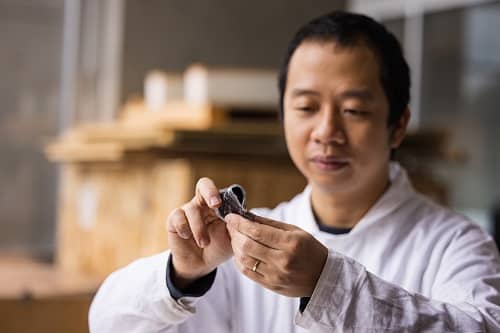The flexible and washable innovation can help create robust batteries that withstand harsh conditions in its daily use

How many times have you accidentally exposed a battery to water, only for it to not respond? It is frustrating when that happens.
But now, there is no need to worry!
Unlike normal batteries whose internal and external layers are hard, researchers from the University of British Columbia (UBC) have invented a battery that can work when stretched up to twice its length and also be washed.
The feat was achieved by embedding crushed fragments of zinc and manganese dioxide in rubbery plastic/polymer. By combining several such ultra-thin polymer layers, an airtight, waterproof seal built up that maintained the battery’s robustness.
“We went with zinc-manganese because, for devices worn next to the skin, it’s a safer chemistry than lithium-ion batteries, which can produce toxic compounds when they break,” said Dr Ngoc Tan Nguyen, lead researcher and postdoctoral fellow at UBC’s faculty of applied science.
To test durability under immersed conditions, the battery underwent 39 wash cycles.
“We put our prototypes through an actual laundry cycle in both home and commercial-grade washing machines. They came out intact and functional and that’s how we know this battery is truly resilient,” said Bahar Iranpour, research team member and PhD student at UBC.
Dr Nguyen added, “Up until now, stretchable batteries have not been washable. This is a critical addition if they are to withstand the demands of everyday use.”
The innovation promises to be revolutionary in terms of battery manufacturing. On large scale production, its cost could be similar to an ordinary rechargeable battery.
“The materials used are incredibly low-cost, so if this is made in large numbers, it will be cheap,” says electrical and computer engineering professor Dr John Madden, director of UBC’s Advanced Materials and Process Engineering Lab.
Besides watches and other portable electronic devices, the battery might also be implemented in colour/temperature changing fabric.
“Wearable devices need power. By creating a cell that is soft, stretchable and washable, we are making wearable power comfortable and convenient.”
The research team is currently working to increase the battery’s power output and cycle life.
“Wearable electronics are a big market and stretchable batteries are essential to their development,” said Dr Nguyen.





